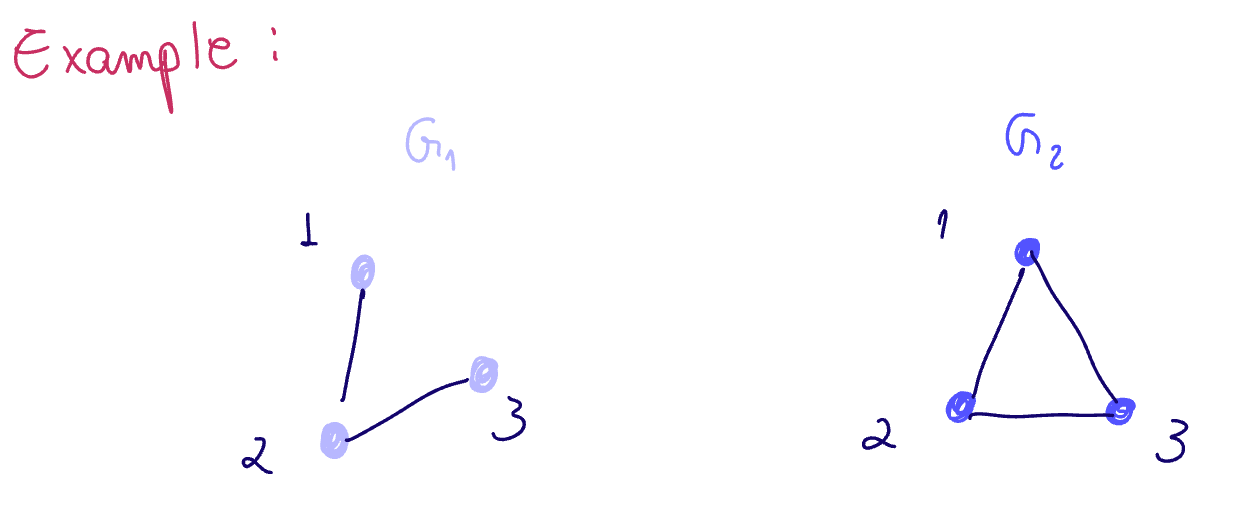Weisfeiler-Leman Graph Isomorphism Test
[[concept]]
Weisfeiler-Leman Graph Isomorphism Test
The Weisfeiler-Leman graph isomorphism test consists of running the color refinement algorithm for two graphs.
Motivation
Since the eigenvalue-based heuristic doesn't work for some graphs, a simple heuristic that does work is counting degrees. Then the problem amounts to comparing the multisets of node degree counts.
If the outputs of the algorithm are not the same, then the two graphs are not isomorphic.
Caution
If the outputs of the algorithm for the two graphs are the same, this is not an indicator that the two graphs are isomorphic! It means the test is inconclusive
In this example, the two graphs have different outputs. Thus, we may conclude that they are not isomorphic.
